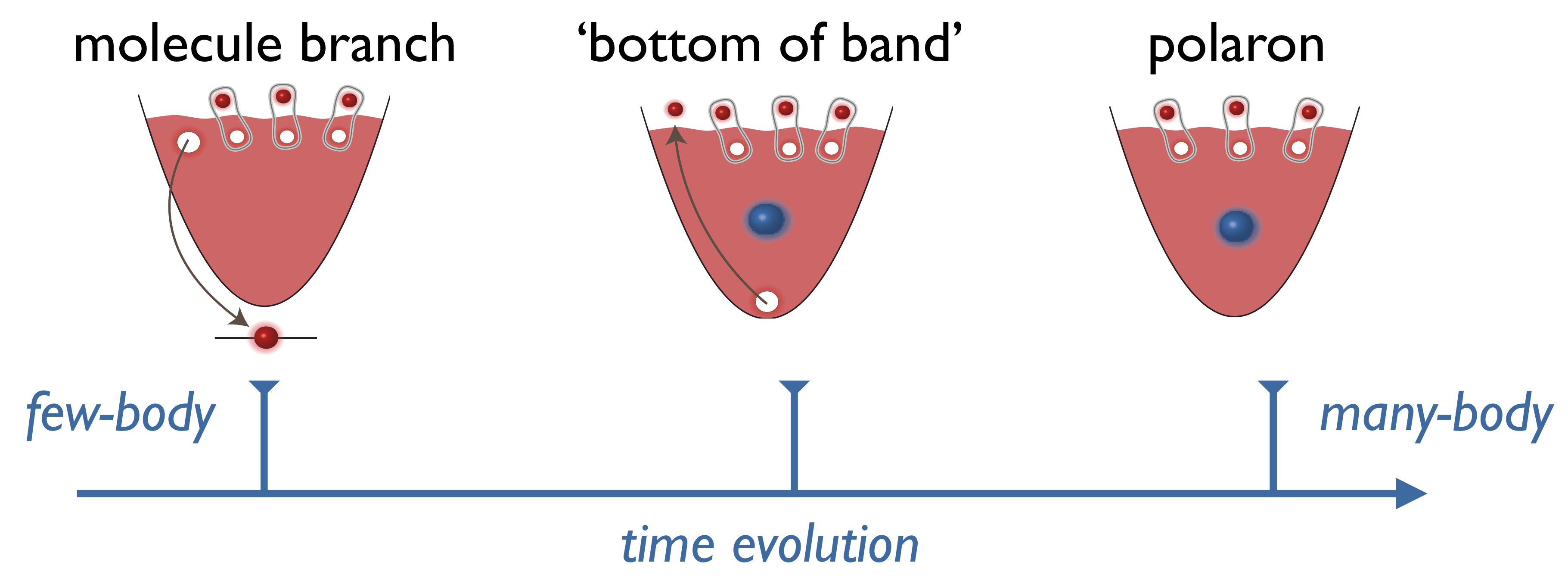Reports on Progress in Physics published
Our work on the dynamics of heavy impurities interacting with a Fermi gas at zero and finite temperature is now published in the review journal “Reports on Progress in Physics”. You find our article here: Rep. Prog. Phys. 81, 024401 (2018)
In this work we study the dynamical response of heavy quantum impurities immersed in a Fermi gas at zero and finite temperature. We review the experimental approaches taken to study and observe the Fermi polaron and highlight their universal connection. By investigating both the frequency and time domain, we identify interaction regimes which are characterized by distinct many-body dynamics. From our theoretical study emerges a picture in which the impurity dynamics is universal on essentially all time scales, and where the short-time few-body response is tied to the long-time dynamics of the Anderson orthogonality catastrophe by Tan relations. We introduce the reader to three complementary theoretical approaches: functional determinants give an exact numerical solution for time- and frequency-resolved responses, bosonization provides accurate analytical expressions at low temperatures, and the theory of Toeplitz determinants allows us to analytically predict response up to high temperatures. Using these three approaches we calculated the thermal decoherence rate of the fermionic system and we prove that the fastest rate of decoherence is universally given by γ = π k T/4 for a large class of models describing Fermi polarons. We show that Feshbach resonances in cold atomic systems give access to new interaction regimes where quantum effects can prevail even in the thermal regime of many-body dynamics. The key signature of this phenomenon is a crossover between different exponential decay rates of the real-time Ramsey signal. Furthermore, we show that the physics of the orthogonality catastrophe can be observed in a power-law dependence of thermal spectral weight on temperature that is reminiscent of the physics of heavy ions in liquid 3He. This feature presents a novel signature tied to the Anderson orthogonality catastrophe that is experimentally observable at temperatures as high as T/TF = 0.2. The presented results are in excellent agreement with recent experiments on LiK mixtures, and we predict several phenomena which can be tested with currently available experimental technology, and we review these findings in the context of past and ongoing research in ultracold atoms and solid state systems.


Comments are closed